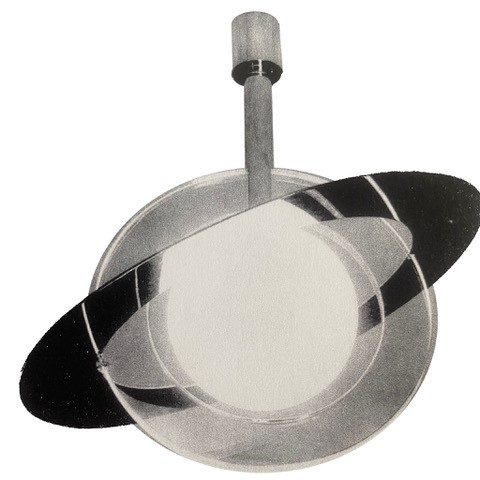Décoration Intérieure Moderne (DIM)

(Founded in 1914)
The company DIM – as it was called for short – was founded in 1914 by René Joubert on Rue Royale in Paris. After the war, Joubert exhibited in the salons and in 1923 entered into a very successful partnership with Pierre Petit. By 1930, DIM had tripled in size and, with its first-class technical and commercial organization, was one of the largest interior design studios in Paris. As an advocate of ‘Le Style 1925’, DIM tried to avoid any superfluous ornamentation and always strived for logic and simplicity. The interiors lived out of architectural asceticism. In addition to their own work, they also sold lamps by Le Chevallier, Guévrékian, Jean Prouvé, Leroy, Lesage Stéphan and the Venini company from Murano. With the emerging fashion for indirect light, individual lamps were replaced at the beginning of the 1930s. However, direct light sources, such as those needed for reading, supplemented the program for general room lighting. Joubert and Petit opted for the simplest shapes: they placed lampshades made of smooth or pleated fabric and parchment on the spherical or amphora-shaped bases.
The cafeteria that DIM furnished in New York and exhibited at the Fall Salon in 1928 had a ceiling of glass blocks that were backlit, creating a diffused lighting effect. Illuminated ceilings were very common in the late 1920s. They consisted of glass stones, recessed glass panels or illuminated glass domes. When Joubert died in 1931, Petit continued to run the company in the concept that they had developed together.
Source: Alastair Duncan, Lampen Lüster Leuchter, Jugendstil Art Déco, Prestel-Verlag, München 1979, p. 167.


-
RSA Antiquitäten Wiesbaden
-
Taunusstraße 34
65183 Wiesbaden -
+49 611 5 29 05 70
-
+49 170 7 83 01 13
-
info@antiquitaeten-wiesbaden.de
-
Mondayclosed
-
Tuesday - Friday12 a.m. - 6 p.m.
-
Saturday10 a.m. - 4 p.m.